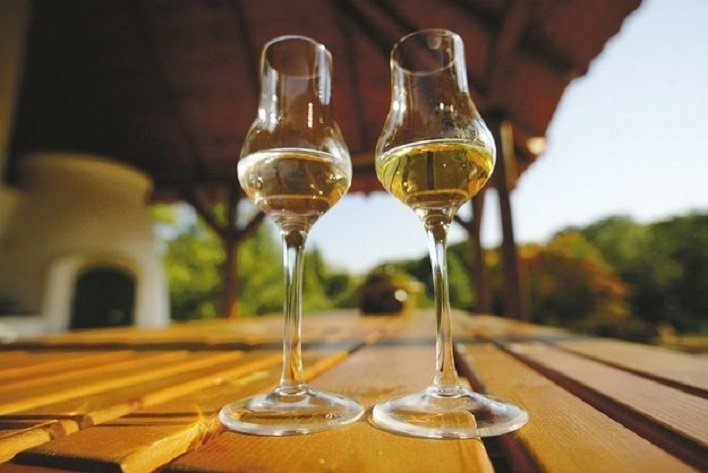The history of Hungarian pálinka
Pálinka: a real and prestigious Hugaricum, writes Őseink Hagyatékai, Örökségünk when popping the question whether Hungarians think about how long the people have known and made this beverage, or even about how its name came? Well, in their post the site tells us a great deal about the drink.
Pálinka is the most ancient beverage of our society – the post starts off – and it is consumed in every part of the world, even though, the ingredients do differ in countries. Such a diversity was created by the weather and the natural conditions.
The tastiest kinds of pálinka are said to be made in the Carpathian basin, as there the drinks are made of fruit, and therefore are uniquely luscious. For example, the climate of the Great Hungarian Plains is exceptionally suitable for fruit production, especially of apricots, plums, cherries, strawberries and pears.
The first textual data about the beverage is from the beginning of the 14th century, during which time the wife of Charles I (Károly Róbert in Hungarian history) had a water of life called “aqua vitae”, which was assumed to be a kind of brandy, the ancestor of nowadays’ pálinka.
The word comes from Slovakian origins, spirits were called “tótpálinka” in Hungary, which meant grain distillate. Later, the same name was used to refer to fruit distillates and the grain-based drinks were given the name “crematura”, hence, it became easy to differentiate between the two.
Right until the 16th century spirits were regarded as medicines, which role is proved by the European terms ‘aqua vitae’ and ‘aqua vini’, and their versions in the other areas. Then, the 15th century brought the collaboration of breweries and distilleries, however, the process was the right of the squires, peasants were not allowed to produce the same amounts.
Even bans, related to the process, have been undertaken, such as the banning of the use of grain bread for distillation purposes, or completely banning the process during times of worship. Yet, under the supervision of the church it was still carried out. The Cistercians for instance, maintained a brewery and a distillery in Heves County, in 1715. The patron of the distillation was St. Nicholas.
Then, the emerging of small factories, alcohol, pálinka and liquor factories and their production, from 1799 on, led to the central control of distillation. The prerogative of the squires became a law in 1836, then tax was levied on pálinka, and in 1850 it became a state monopoly.
The number of distilleries in Hungary varied greatly in different times: 260 operated in 1920, while in 1970 it rose to 1070, but then decreased to 815 in 1982. In the meantime an alcohol embargo was set in 1919 and in the period of 1952-1970 halving was introduced: one half of the production was kept by the producer while the other half went to the state.
It was the closing down of the peasants’ distilleries in the 18th century that brought the secret distillations to existence. The masters aimed to not let the fruits go to waste and also to carry out the making process at home instead of the distillery, for it was far cheaper that way. They consumed it on their own and with their neighbours, friends or guests.
Photo: agroinform.com
Copy editor: bm
Source: facebook.com/oseinkhagyatekaioroksegunk
please make a donation here
Hot news
Minister: Hungary will protect its territory by every means possible
Orbán cabinet may double airspace fee: another ticket price increase?
Hungary expanding the list of prohibited designer drugs
Hungarian minister: Ukraine ‘blackmailing’ Hungary and pro-peace states
Cocaine found on a Greek bus at southern border of Hungary
NCIS star arrived in Budapest: spin-off filming started




